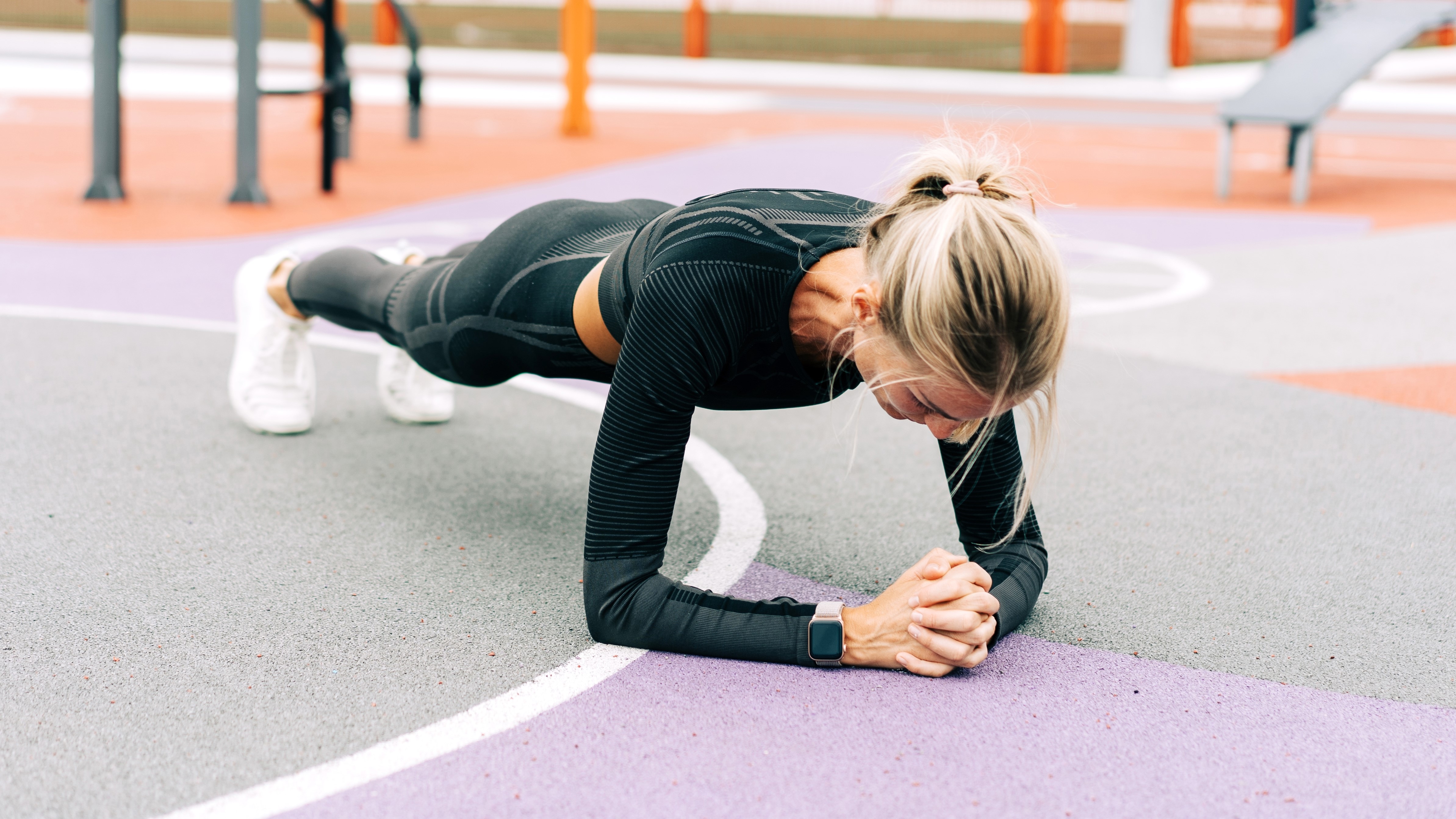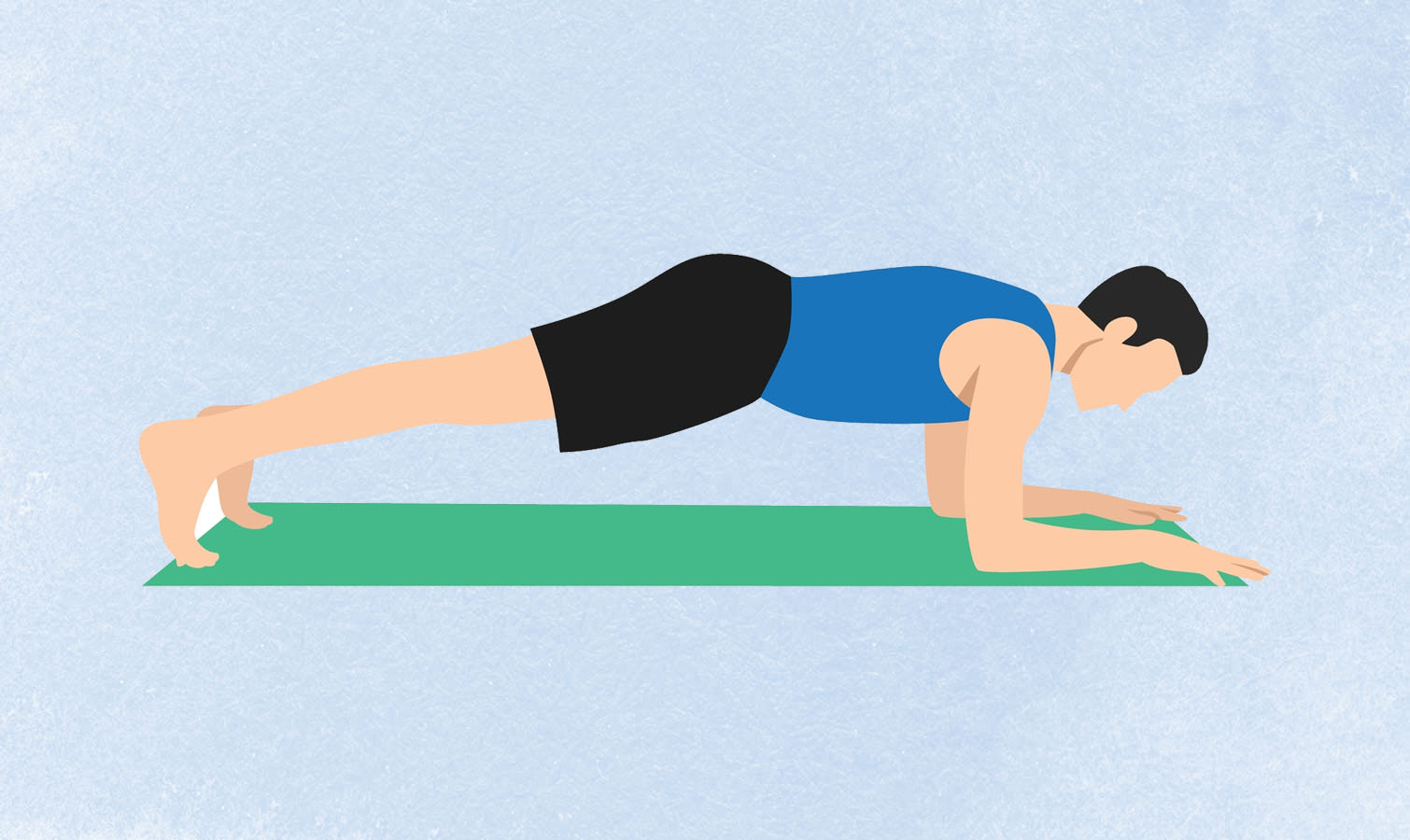I did a 5-minute plank every day for a week — here’s what happened to my abs

You might not think that holding a plank every day could have that many benefits, but I’m here to tell you straight off the bat that holding a five-minute plank every day for a week has been one of the best things I’ve ever done for my core. Read on to find out more.
As a reminder, strong abs aren’t just an aesthetic goal — the core generally helps and supports us throughout all our day-to-day movements, plus, the core muscles also protect the spine from injury.
I’m a runner, and I find that my lower back can get sore quite easily during long-distance runs, so I try to make sure I’m doing all I can to strengthen my core and minimize my chances of back pain.
In my quest to work my core even harder, I decided to take on the five-minute plank challenge, holding a five-minute forearm plank every day for a week. Here’s how it went. (FYI: this is not one for the faint-hearted).
What are the benefits of the plank?
This isometric (aka still) move has several benefits, the main one being that it helps strengthen all the muscles in the core. Our core is made up of several different muscles — not just the abs muscles that make up the six-pack’ — and ensuring we target them all is essential to help maintain good stability and posture. Plus, it’s always wise to work the muscles in equal amounts for a balanced body; stronger muscles that have to overcompensate for weaker muscles can result in injury.
The plank is also great for working out our back muscles, upper body, and even the legs. So essentially, this move is a great all-rounder. Oh, and let’s not forget that a plank can be done anywhere, anytime; it’s a bodyweight move that requires nothing but your body weight. Put your best kettlebells and best adjustable dumbbells to one side for this one!
Because a plank is an isometric exercise, it means muscles are kept under tension. It’s this time under tension (TUT) that has a big impact on muscle growth. Naturally, holding a plank for five minutes means some serious TUT. If it’s a toned midsection you’re after, then a plank has been proven to elicit greater results than the classic crunch, as planks make the abdominal muscles work harder.
Get instant access to breaking news, the hottest reviews, great deals and helpful tips.
How to hold a plank

- For a basic forearm plank, lie face down on the floor.
- Push yourself up so your body is resting on your forearms and toes. Your elbows should be directly underneath your shoulders and your body should be in a straight line.
- From here, engage with and squeeze your core, glutes, and hamstrings, keeping your gaze down between your hands.
- You can also do high planks which involve resting on the palms of your hands rather than your forearms.
I did a five-minute plank every day for a week — here’s what happened
The planks got easier…
Ok, so five minutes doesn’t seem like much but when you’re holding a plank and squeezing your core, leg, and back muscles, well let’s just say, time certainly does not fly.
But five minutes at the start of my week felt very different from five minutes by the end of my week. My core must have adapted slightly, as I could definitely have held the plank for longer by the end of my challenge.
…Although I did fail on occasion
On day three, I decided to do one of my five-minute planks after a few sets of pull-ups so my arms were throbbing majorly as I got down into my forearm plank. I lasted two minutes (watching YouTube videos of a competitive eater to help the time go quicker) before collapsing. I then had to rest about every 45 seconds for the remaining three minutes.
I felt like a major failure but a lesson learned: don’t hold a five-minute plank after working out your upper body!
My arms really felt the burn
I’m not sure why really, other than my arms being weaker than my core, but my arms were the body part that felt the most pain during the five-minute planks. I tried to even out my body weight and make sure my legs, core, and arms took an equal load, but still, my arms and shoulders were throbbing pretty early on.
My core on the other hand is fairly strong as I have trained it since I was a teen (I am 32 now, sigh) so it felt fine throughout the entire plank.
I broke a sweat
Who knew holding your body still for five minutes could be so sweaty? I guess I didn’t really fully appreciate the amount of sweat that could drip down my back and torso holding a plank. Honestly, time under-tension workouts are tough, and muscles are working just as hard (if not harder!) than they are doing non-static exercises.
My core felt TIGHT
By the seventh day of five-minute planking, my abs felt far stronger. Just looking in the mirror I noticed more tone. Now, one week of planks isn’t long, so this change might have only been noticeable to me but still, the fact I saw a difference really does confirm how good bodyweight exercises can be.
I added some movement
A five-minute plank is pretty dull, let's face it. So I spiced things up a touch with some movement. Side-stepping my feet in and out one by one fired up my obliques (the muscles that run down the side of your core), whilst some hip dips — dropping my hips down either side — also gave my obliques more of a workout. These movements also helped the five minutes of plank torture go a little quicker.
The five-minute plank challenge: my verdict
To be honest, I did think this would be easier than it was and I was certainly humbled as I collapsed to my exercise mat during several of my planks. It was really my arms that couldn’t take it, rather than my core, so if anything, I will be carrying on with my planks, purely because it will challenge my upper body and help to condition them.
Overall, I would recommend everyone incorporate planks into their workouts. You don’t necessarily have to do five-minute planks like I did, but the fact I noticed results in just a week, says a lot about this simple bodyweight move.
Whatever you’re training for, your core strength is of utmost importance, and we should all be factoring in core exercises within our workout regimes to minimize injury, maintain good balance and stability, and generally help us move more comfortably, with better posture. The plank can be done anywhere too, so wherever you are, drop down to your forearms and work those core muscles!
More from Tom's Guide
- Forget Russian twists — 5 standing ab exercises that sculpt your core muscles using one kettlebell
- Forget planks — I did 100 sphinx push-ups every day for a week, and here are my results
- Forget sit-ups — this abs shredder workout sculpts your core in 5 exercises with just 1 dumbbell
Lucy is a freelance health and fitness journalist as well as a pre and post-natal personal trainer. Although a sweaty gym session (skipping rope is a must) is her favorite way to ‘relax’, she’s also a fan of bingeing on The Office, snacking on chocolate-coated raisins, and fizz-filled brunches with friends.

